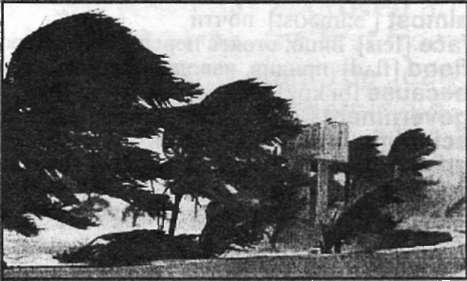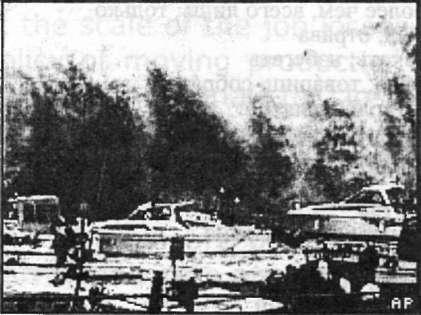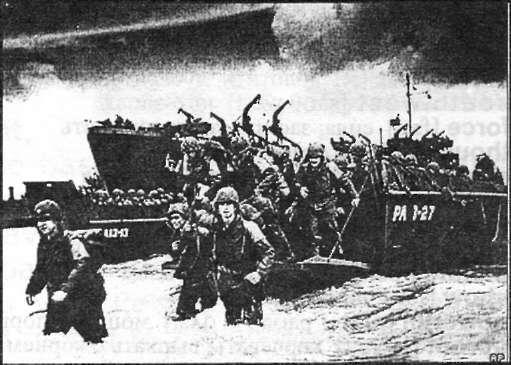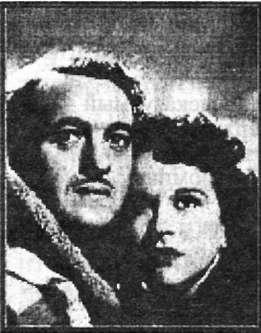
- •Наши рекомендации
- •Thatcher attends "coup plot' case
- •Putin's Atomic Boast
- •Plea not to judge Muslims by acts of extremism
- •Kodak to shed 600 uk jobs
- •World Trade Organization
- •Record fine for worker's death
- •China files lawsuit against Yukos
- •Scientist kept plutonium in garage
- •A foreign corner of an English field
- •Uk repatriates bodies of Chinese
- •Opec: The oil cartel in profile
- •Egyptians release Israeli 'spy'
- •Independent, 10 . 11 . 04 .
- •'Come bite me!' right...
- •'Treasure hunt' for bandit's loot
- •Thai protesters die in custody
- •Funny old world
- •Pupils suspended over airgun attack
- •Singapore to protect schools with guards
- •Naked man climbs into la jet
- •Hunt for missing golfing tourist
- •Military to help young offenders
- •'We're not all hooligans'
- •Shipwreck 'could yield billions'
- •Paddling policeman grabs record
- •Fact file: Nimrod Rl
- •Submarine issues call for help
- •Bird flu claims 147 tigers in Thailand
- •100 Million paper birds
- •Anglo-Saxon coin fetches 3230 000
- •Deadly typhoon tears across Japan
- •From Russia With Love
Deadly typhoon tears across Japan
Japan is clearing up after the deadliest typhoon in a decade killed at least 67 people. At least 21 others are missing after the storm hit on Wednesday. Typhoon Tokage reached speeds of 229 km/h as It battered the south-west, forcing thousands to evacuate amid the threat of mudslides.

Television pictures showed powerful gusts uprooting huge trees, cars stranded in flash floods and delivery trucks lying on their sides. Coastal defences
crumbled and houses and cars were swept away by floods. Near the city of Kyoto, 37 elderly tourists were rescued after spending the night on the roof of their bus, stranded by floods.
Tokage - the Japanese word for lizard - was the 10th major storm to make landfall in Japan this year. At its peak, it stretched across an 800km radius. "The main reason why the typhoon caused such huge damage is that its size is big... That means the typhoon affected almost all of Japan for a long time with rains and winds," a Meteorological Agency official told Reuters news agency. "Such a huge typhoon is very rare," he said.
Many of those killed were either drowned or buried in some of the more than 280 landslides which took their heaviest toll in southern Japan. Parts of the south, especially in Miyazaki Prefecture, were virtually shut down with public schools closed and transport services suspended. Almost 1,000 domestic flights were cancelled, affecting some 127,000 passengers. Bullet trains linking Tokyo and Osaka were suspended due to heavy rain triggered by the typhoon, but resumed services late on Wednesday.
The meteorological agency warned that waves of up to 9m (30 feet) could hit southern coastlines, and heavy rain would continue to pound parts of southern Kyushu and Shikoku islands into early Thursday. Chief Cabinet Secretary Hiroyuki Hosoda promised government help for affected areas."I would like to express my heartfelt condolences...
We will take all possible measures," he told reporters.
Typhoons develop when the ocean is warm and the atmosphere is unstable. Cool winds push hot air up from the water in a column. Moisture is carried up with it, spinning and releasing latent energy as it goes. This disturbs the atmosphere even more, increasing the wind and setting into motion a self-generating turbulence which swirls around an area of trapped air; the 'eye'. This weather system is called a cyclone.
Cyclones circulate counter clockwise in the Northern Hemisphere and clockwise in the Southern Hemisphere. When the winds reach 118kmp the cyclone is reclassified. If it occurs in the North Atlantic Ocean, the Northeast Pacific east of the dateline, or in the South Pacific east of 160E, it will be called a hurricane. If it's in the Northwest Pacific Ocean west of the dateline, it'll be called a typhoon.
Each individual storm also gets a special name. It was always a woman's up until political correctness struck in 1987. Now, just in case anyone got the idea that meteorologists think women have the worst tempers, these climatic tantrums alternate between male and female names.
With weather as fierce and unpredictable as this, the cost in lives and property can be enormous. But is there anything we can do? Some scientists think there is. They reckon the power can be sucked out of the storm before it hits populated areas. Their ideas might sound a little mad but they might just work:

Soot: If a number of ships burned petroleum near the typhoon, the resulting soot would get caught up in the winds. Because black absorbs heat, the weather system would be disrupted by updrafts and would lose its power.
Mirror: If there was a big tin foil mirror in space, it could be used to focus sunlight on the ocean in the path of the storm. The heat would divert the typhoon from its course, leading it away from populated areas.
52

53
The Classic Film Review
A Matter of Life & Death
by Trevor Brown
Made during the Summer and Autumn of 1945, at a time when the Second World War was drawing to a close, A Matter of Life and Death is now one of the most highly regarded British films ever made, and if you have seen it you will understand why (I first saw the film on television when I was about 15 and it made a strong impression on me).
It was produced and directed by the famous team of Michael Powell and Emeric Pressburger, who also produced many other well loved and beautifully made films such as The Life and Death of Colonel Blimp (1943), Black Narcissus (1947) and The Red Shoes (1950). All of the films made by this English director and Hungarian producer are technically excellent and extremely intelligent, yet to me A Matter of Life and Death is possibly the pinnacle of their careers, mixing a superb script, beautiful colour photography and marvelous acting by a perfect cast.

The film takes place in 1945 and concerns the
story of how a British aircraft pilot, Peter Carter (played by David Niven), and an American airforce worker called June (played by Kim Hunter) meet and fall in love in the strangest circumstances. The film starts off with Peter talking into his radio to the air traffic controller (June) to say that his aircraft is so severely damaged after being shot at by German planes that he cannot land. However, rather than die in the crash, Peter decides to jump to his death over the English Channel (the 40 km stretch of water that separates England from France). Yet due to the very bad weather that the plane encounters, Peter's jumping from the plane is missed by the people in the afterlife whose job it is to bring them to Heaven. Somehow Peter survives the jump and wakes up on an English beach. What ensues is a story of Peter desperately wanting to stay alive down here on earth whilst the politics and bureaucracy of the heavens demands that he give up his life as he was due to die in the plane crash.
The premise of the film is a romantic one, yet it is also political. The film deals with the aftermath of the Second World War. Peter has to fight for his right to exist in a heavenly court where the prosecutor is an American who was killed by the British in the American war of independence in 1776. In fact the film deals with the history between Britain and America, as well as other nations, and how the British are perceived outside of the country. The violence that came with Britain's empire is also addressed and questioned. When the court jury is discovered to consist of nationalities who were all killed in various wars with the

British Empire, all looks bleak for Peter.
This is justifiably classified as a classic of British film history. With a clever, satirical script that addresses Britain's relationship with the rest of the world in 1946, a strong cast and some of the best use of colour ever seen in a film, it is hard to dislike this film. David Niven was a Scottish born actor who had started out in the British army before becoming a film star in Hollywood by the late 1930s. When war broke out between Britain and Germany in 1939,
Niven (against Hollywood's wishes) returned to Britain and rejoined the army.
This would no doubt have helped his post-war box office appeal as a real life war hero and given his credibility in the role a boost. Kim Hunter (who died in 2002) was an up and coming actress who was to go on to a reasonably successful career as a supporting actress in future films. The film is also technically and artistically surprising. In one scene Peter walks through a glass window in a hospital without breaking it, a brilliant bit of special effects work! Scenes on Earth are filmed in colour whilst scenes filmed in the afterlife are in black and white giving the film a quite unusual feel to it. Also, keep a look out for a Richard Attenborough, the future British film star and Oscar winning director, in a small role as a young airman who is also in heaven.
54

55
Strangely enough, A Matter of Life and Death was not critically well received at the time of its British release in 1946. The British Ministry of Information had asked Powell & Pressburger to make a film that would deal with Britain's relationship with the world and especially America. The final result was a whimsical romantic fantasy that the critics were not expecting.
They had wanted to see a far more realistic and gritty depiction of Britishness, especially in the wake of the more adult themed dramas that dealt with prejudice, alcoholism and everyday reality that Hollywood was starting to turn out in the form of films such as Lost Weekend. A Matter of Life and Death was released in the United States under the title Stairway to Heaven, possibly to try and sell the film to audiences out there as a romantic story whereas the original British title may have given British audiences the misconception that the film was more of a social drama. Perhaps this is the reason the film initially received lukewarm reviews.
To conclude this article, A Matter of Life and Death is a staggeringly beautifully made film that was only a moderate success when originally released. This could be down to a variety of reasons but over the last 58 years it has grown in stature for a great many film critics. Always watchable, it is a visual treat with a clever story that I wouldn't hesitate to recommend.
London. October 2004
